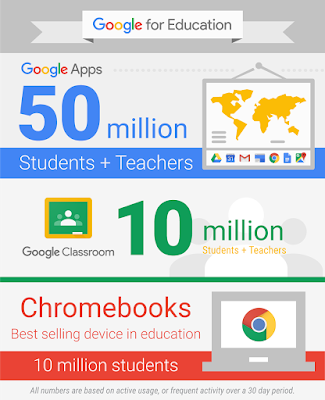CALIFORNIA STATE PARK ONLINE RESOURCES FOR TEACHERS AND STUDENTS
Units of Study
PORTS is proud to announce the completion of the PORTS Unit of Study Common Core Alignment Project. All of the Units of Study are aligned to the Common Core State Standards. It has been exciting to note that our videoconference presentations are already aligned with the Speaking and Listening standards prominant in the CCSS:
Speaking and Listening: Flexible communication and collaboration
Including but not limited to skill necessary for formal presentations, the Speaking and Listening standards require students to develop a range of broadly useful oral communication and interpersonal skills. Students must learn to work together, express and listen carefully to ideas, integrate information from oral, visual, quantitative, and media sources, evaluate what they hear, use media and visual displays strategically to help achieve communicative purposes, and adapt speech to context and task.
To register for a PORTS distance learning program, complete the PORTS Registration Form (PDF) and email it to your local PORTS Program Coordinator or the PORTS Interpreter listed for a specific Unit of Study.
PORTS Registration Form (PDF)
5E Lesson Plans
PORTS is piloting a new format for our lesson plans called the 5E that better aligns with the critical thinking skills being promoted by Common Core State Standards and the Next Generation Science Standards . The 5 Es of teaching science with inquiry are Engagement, Exploration, Explanation, Elaboration, and Evaluation. Our newest units of study, Mammals and Monarch Butterfly Life Cycle and Migration, are written in a three column version of the 5E lesson plan that shows teachers what to do and say, what types of probing questions to ask, and how students might respond.
ANCIENT CIVILIZATIONS
Explore the art and architecture of the ancient Greeks and Romans through the art and artifacts of Hearst Castle (6th grade)
Ancient Civilizations Unit of Study
COASTAL RESOURCE PROTECTION – COMING SOON!
Soon students can explore the coastal resources of Point Lobos Natural Reserve and learn how Marine Protected Areas are being used to help protect them.
For now, you can check out the following units of study which are already discussing Marine Protected Areas.
Elephant Seals
Tidepool Ecology
Salmon Lifecycle
Science of Habitat Restoration and Protection
We will also soon unveil our new Marine Protected Areas online modules here.
Coastal Resource Protection Unit of Study
DESERT STORIES TODAY AND YESTERDAY
Explore Anza-Borrego Desert State Park to discover its stories of change, preservation, extinction and protection. (4th and 6th grade)
ELEPHANT SEALS
Students are introduced to the evolutionary history and adaptations of the northern elephant seals at Año Nuevo State Reserve. (7th grade)
GOLD RUSH
Learn about the California Gold Rush from Columbia State Historic Park. (4th grade)
IMMIGRATION
Explore the topic of immigration through the stories and lives of those who came through the US Immigration Station at Angel Island State Park.
MONARCH BUTTERFLY LIFECYCLE AND MIGRATION
Explore the mystery of Monarch butterfly lifecycle and Migration from Natural Bridges State Park. (Kindergarten – 3rd grade)
Monarch Butterfly Life Cycle and Migration Unit of Study
REDWOOD ECOLOGY
Find out about the unique redwood forest ecosystems of Humboldt Redwoods and Prairie Creek Redwoods State Parks. (6th grade)
SALMON LIFECYCLE
Students are introduced to the life cycle of salmon and the importance of watersheds for their survival at Del Norte Redwoods State Park (3rd, 6th grade)
SCIENCE OF HABITAT PROTECTION AND RESTORATION
Students discover how human impacts degrade some of California’s native ecosystems and habitats while getting a first-hand look at the work California State Parks has done to restore the coastal sage scrub habitat at Crystal Cove State Park. (6th-8th Grade)
Science of Habitat Protection and Restoration Unit of Study
STATE GOVERNMENT
Engage students in researching information about their state representatives, the law-making process, and how they, as citizens, have a voice in government. (8th (adaptable for other grades)
State Government Units of Study
TIDE POOLS
Experience life at the ocean’s edge and find out why life in the tide pools is no day at the beach. (4th, 5th grade) new test
WEATHER AND CLIMATE
Baldwin Hills Scenic Overlook is a great place to observe weather. Students will learn about weather, climate and the story of this unique park in Los Angeles. (5th grade)
Weather and Climate Unit of Study
WHAT IS A MAMMAL?
Explore how mammals are different from other animals by learning unique features of mammals and comparing them to reptiles, insects and others. (Kindergarten-2nd grade)
What is a Mammal? Unit of Study
OTHER PROGRAMS
Check out what else we have to offer!
(K-12th grade)
RELATED PAGES
Contact Us
- Address: 1416 9th Street Sacramento, CA 95814 | P.O. Box 942896 Sacramento, CA 94296
- Public Information Inquiries: (916) 653-6995 | (800) 777-0369
- For Specific Park Questions: Contact Us Page
- General Questions: info@parks.ca.gov
Follow Us
Select a Language
Select Language▼
Latest Tweet
Stay tuned to our #TransformationTuesday as cabins go from planning to breaking ground. (Image is artist rendering)https://t.co/s8NS31m0pn1h
Copyright © 2015 State of California









